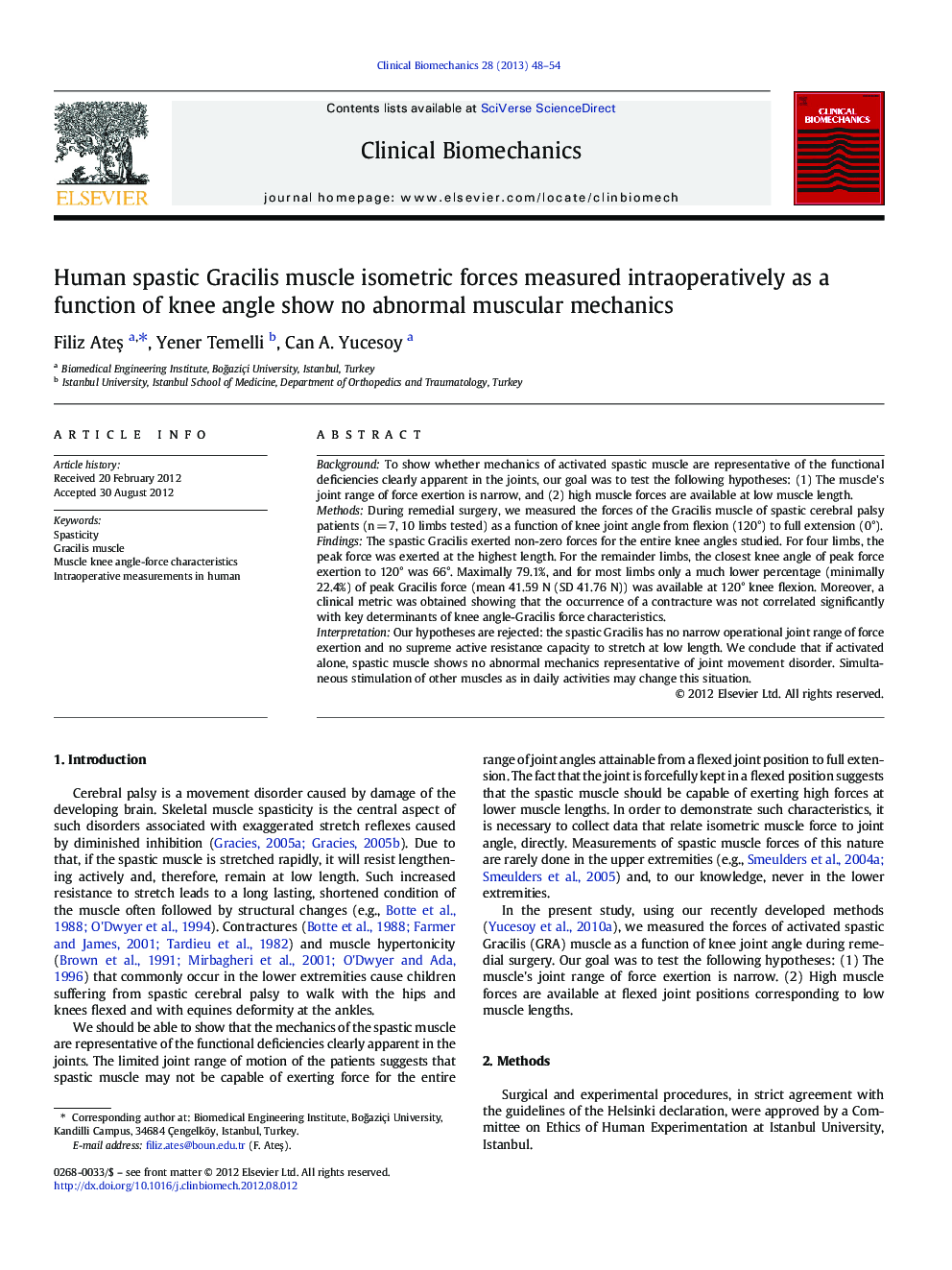| Article ID | Journal | Published Year | Pages | File Type |
|---|---|---|---|---|
| 4050391 | Clinical Biomechanics | 2013 | 7 Pages |
BackgroundTo show whether mechanics of activated spastic muscle are representative of the functional deficiencies clearly apparent in the joints, our goal was to test the following hypotheses: (1) The muscle's joint range of force exertion is narrow, and (2) high muscle forces are available at low muscle length.MethodsDuring remedial surgery, we measured the forces of the Gracilis muscle of spastic cerebral palsy patients (n = 7, 10 limbs tested) as a function of knee joint angle from flexion (120°) to full extension (0°).FindingsThe spastic Gracilis exerted non-zero forces for the entire knee angles studied. For four limbs, the peak force was exerted at the highest length. For the remainder limbs, the closest knee angle of peak force exertion to 120° was 66°. Maximally 79.1%, and for most limbs only a much lower percentage (minimally 22.4%) of peak Gracilis force (mean 41.59 N (SD 41.76 N)) was available at 120° knee flexion. Moreover, a clinical metric was obtained showing that the occurrence of a contracture was not correlated significantly with key determinants of knee angle-Gracilis force characteristics.InterpretationOur hypotheses are rejected: the spastic Gracilis has no narrow operational joint range of force exertion and no supreme active resistance capacity to stretch at low length. We conclude that if activated alone, spastic muscle shows no abnormal mechanics representative of joint movement disorder. Simultaneous stimulation of other muscles as in daily activities may change this situation.
